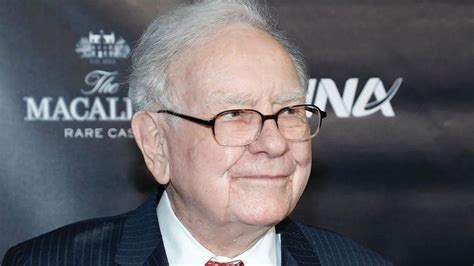
Tesla is resorting to significant price cuts and incentives to stimulate demand amid a notable slowdown in sales, raising concerns about the electric vehicle giant’s growth trajectory and market position.
Tesla, facing a slump in sales, is aggressively deploying incentives, including price reductions and favorable financing options, in an attempt to revive demand, raising questions about the long-term sustainability of its growth model. The electric vehicle (EV) manufacturer, which previously enjoyed a period of robust growth fueled by high demand and limited competition, is now navigating a more challenging market landscape marked by increased competition and evolving consumer preferences. The company’s recent strategies signal a shift from its historically premium pricing approach, reflecting a more competitive environment where affordability and value are becoming increasingly important for consumers.
According to recent reports, Tesla has implemented several measures to entice buyers. These include substantial price cuts on various models, attractive financing rates, and other incentives designed to make its vehicles more accessible to a broader range of consumers. The decision to offer these incentives comes as Tesla grapples with slowing sales growth and increasing inventory levels, prompting analysts to question whether the company can maintain its ambitious growth targets without sacrificing profitability.
One of the key factors contributing to Tesla’s current challenges is the intensifying competition in the EV market. As more automakers enter the electric vehicle space, consumers have a wider array of options to choose from, leading to increased price sensitivity and a greater emphasis on features and performance. Tesla, once the undisputed leader in the EV market, now faces competition from established automakers like Ford and General Motors, as well as emerging players like Rivian and Lucid.
The company’s recent earnings reports have reflected the impact of these market dynamics, with Tesla reporting lower-than-expected sales figures and profit margins. In response, Tesla CEO Elon Musk has acknowledged the need to adjust the company’s strategy to address the changing market conditions. “We’ve taken actions to address this, including adjusting pricing and offering incentives,” Musk stated in a recent investor call. “We believe these measures will help us to drive demand and maintain our market leadership.”
However, some analysts remain skeptical about the long-term effectiveness of Tesla’s current strategy. They argue that price cuts and incentives may provide a temporary boost to sales, but they could also erode the company’s brand image and profitability over time. “Tesla needs to find a way to differentiate itself from the competition beyond just price,” said Gene Munster, a managing partner at Deepwater Asset Management. “They need to focus on innovation, technology, and customer experience to maintain their competitive edge.”
The situation has led to speculation about Tesla’s future strategy, with some suggesting that the company may need to explore new avenues for growth, such as expanding its product line, entering new markets, or developing new technologies. Others believe that Tesla’s long-term success will depend on its ability to maintain its technological lead and continue to innovate in areas such as battery technology, autonomous driving, and energy storage.
Deeper Dive: Examining the Forces Behind Tesla’s Sales Dip
The factors contributing to Tesla’s sales slowdown are multifaceted, encompassing both macroeconomic trends and company-specific challenges. Understanding these dynamics is crucial for assessing the sustainability of Tesla’s current incentives-driven strategy.
-
Economic Headwinds: The global economy is currently facing a period of uncertainty characterized by high inflation, rising interest rates, and fears of a recession. These factors have dampened consumer spending on big-ticket items like cars, impacting the entire automotive industry, including Tesla. High interest rates, in particular, make financing a new car more expensive, discouraging potential buyers.
-
Increased Competition: As previously mentioned, the EV market is becoming increasingly crowded, with new models from both established automakers and startups entering the market. This increased competition gives consumers more choices and puts pressure on Tesla to lower prices and offer incentives to remain competitive. Legacy automakers like Ford and GM are investing heavily in their EV programs and are launching compelling electric vehicles that directly compete with Tesla’s models. Companies like Rivian and Lucid are also targeting the premium EV segment, further intensifying the competition.
-
Production Constraints: While Tesla has made significant progress in increasing its production capacity, the company still faces challenges in meeting demand for certain models. Production bottlenecks, supply chain disruptions, and manufacturing inefficiencies can all limit the number of vehicles that Tesla can deliver to customers, leading to longer wait times and frustrated buyers.
-
Demand Saturation: After years of rapid growth, Tesla may be approaching a point of demand saturation in some of its key markets. Early adopters and EV enthusiasts have already purchased Tesla vehicles, and the company now needs to appeal to a broader segment of the population that may be more price-sensitive and less brand-loyal.
-
Model Age: Some of Tesla’s models, such as the Model S and Model X, have been on the market for several years and may be losing their appeal to consumers who are looking for the latest technology and design. While Tesla has introduced some updates and improvements to these models, they may not be enough to keep pace with the rapidly evolving EV market.
The Impact of Incentives on Tesla’s Financial Performance
The use of price cuts and incentives can have a significant impact on Tesla’s financial performance, particularly its profit margins. While these measures may help to boost sales volume, they can also erode profitability, especially if they are not carefully managed.
-
Reduced Profit Margins: Price cuts directly reduce the revenue that Tesla generates from each vehicle sold, which can lead to lower profit margins. Incentives such as low-interest financing also impact profit margins, as Tesla has to absorb some of the financing costs.
-
Brand Dilution: Excessive reliance on price cuts and incentives can damage Tesla’s brand image and position it as a more mass-market brand rather than a premium brand. This can make it more difficult for Tesla to command premium prices in the future.
-
Inventory Management: Incentives can help Tesla to reduce its inventory levels, which can be costly to store and manage. However, if incentives are not effective in stimulating demand, Tesla may still be left with excess inventory, which can put further pressure on its financial performance.
-
Long-Term Sustainability: The long-term sustainability of Tesla’s growth model depends on its ability to maintain healthy profit margins while continuing to invest in innovation and expansion. If Tesla relies too heavily on price cuts and incentives, it may struggle to achieve this goal.
Alternative Strategies for Tesla’s Growth
Given the challenges that Tesla is currently facing, the company may need to explore alternative strategies for growth that go beyond simply cutting prices and offering incentives.
-
Product Diversification: Tesla could expand its product line to include new types of vehicles, such as a smaller, more affordable electric car or an electric pickup truck. This would allow Tesla to appeal to a broader range of consumers and enter new market segments.
-
Market Expansion: Tesla could expand its presence in international markets, particularly in emerging economies where demand for electric vehicles is growing rapidly. This would help Tesla to diversify its revenue streams and reduce its reliance on the US market.
-
Technology Innovation: Tesla could continue to invest in technology innovation, particularly in areas such as battery technology, autonomous driving, and energy storage. This would help Tesla to maintain its technological lead and differentiate itself from the competition.
-
Service and Support: Tesla could improve its service and support offerings to enhance the customer experience and build brand loyalty. This could include expanding its network of service centers, offering more personalized customer support, and providing more convenient charging options.
-
Energy Solutions: Tesla could further develop its energy solutions business, which includes solar panels, energy storage systems, and virtual power plants. This would allow Tesla to diversify its revenue streams and contribute to a more sustainable energy future.
Expert Opinions and Analyst Perspectives
Industry analysts and experts have offered various perspectives on Tesla’s current situation and the effectiveness of its strategies.
-
Gene Munster, Deepwater Asset Management: As mentioned earlier, Munster believes that Tesla needs to differentiate itself beyond just price and focus on innovation and customer experience. He argues that Tesla should leverage its technological expertise and brand recognition to maintain its competitive edge.
-
Dan Ives, Wedbush Securities: Ives remains bullish on Tesla’s long-term prospects, citing the company’s strong brand, technological leadership, and growing production capacity. However, he acknowledges that Tesla faces challenges in the near term, including increased competition and macroeconomic headwinds. He believes that Tesla’s incentives are a necessary step to navigate the current market environment.
-
Adam Jonas, Morgan Stanley: Jonas has expressed concerns about Tesla’s declining profit margins and the potential for further price cuts. He believes that Tesla needs to find a way to balance growth with profitability to maintain its long-term financial health. He suggests that Tesla should focus on improving its manufacturing efficiency and reducing its operating costs.
-
Cathie Wood, ARK Investment Management: Wood remains optimistic about Tesla’s future, citing the company’s potential to disrupt the automotive and energy industries. She believes that Tesla’s investments in autonomous driving and battery technology will drive significant growth in the coming years.
The Road Ahead: Navigating a Changing Landscape
Tesla’s current situation highlights the challenges of maintaining rapid growth in a dynamic and competitive market. The company’s decision to offer incentives reflects a recognition of these challenges and a willingness to adapt its strategy to meet the evolving needs of consumers. However, the long-term success of Tesla will depend on its ability to balance growth with profitability, differentiate itself from the competition, and continue to innovate in key areas such as technology and customer experience. The road ahead for Tesla is likely to be filled with both opportunities and challenges, and the company’s ability to navigate this changing landscape will determine its ultimate success.
The reliance on incentives also underscores the broader shift in the EV market, where consumer demand is no longer solely driven by novelty and environmental consciousness. Affordability, practicality, and feature parity with traditional vehicles are becoming increasingly important factors influencing purchasing decisions.
Tesla’s Response to Criticisms:
Tesla has defended its pricing strategy, arguing that it is necessary to make its vehicles more accessible to a wider range of consumers and accelerate the transition to sustainable energy. The company has also emphasized its commitment to innovation and its efforts to reduce production costs, which will allow it to offer more competitive prices without sacrificing profitability.
“Our goal is to make our products as affordable as possible so that more people can experience the benefits of electric vehicles and sustainable energy,” Musk stated. “We are constantly working to improve our manufacturing efficiency and reduce our costs so that we can pass those savings on to our customers.”
However, critics argue that Tesla’s price cuts and incentives are a sign of desperation and that they are undermining the company’s brand image. They also point out that Tesla’s profit margins have been declining in recent quarters, raising concerns about the company’s long-term financial health.
Conclusion:
Tesla’s “desperate” discounts and incentives reflect the increasing challenges the company faces in a rapidly evolving EV market. While these measures may provide a short-term boost to sales, they also raise concerns about the company’s long-term profitability and brand image. Tesla will need to carefully manage its pricing strategy and continue to innovate to maintain its competitive edge in the years to come. The success of Tesla’s strategy remains to be seen, and the coming quarters will be crucial in determining whether the company can successfully navigate the challenges and capitalize on the opportunities in the EV market. The electric vehicle landscape is changing, and Tesla must adapt to remain a dominant force.
Frequently Asked Questions (FAQ)
1. Why is Tesla offering discounts and incentives on its vehicles?
Tesla is offering discounts and incentives due to a slowdown in sales growth and increasing competition in the electric vehicle market. These measures are aimed at stimulating demand and making Tesla’s vehicles more accessible to a wider range of consumers.
2. What types of incentives is Tesla offering?
Tesla is offering several types of incentives, including price cuts on various models, attractive financing rates, and other promotions designed to make its vehicles more affordable.
3. How will these incentives affect Tesla’s profitability?
Price cuts and incentives can reduce Tesla’s profit margins, as the company generates less revenue from each vehicle sold. However, Tesla hopes that increased sales volume will offset the lower margins.
4. Is Tesla losing its competitive edge in the EV market?
Tesla faces increasing competition from established automakers and new entrants in the EV market. While Tesla remains a leader in technology and brand recognition, it needs to continue innovating and differentiating itself to maintain its competitive edge.
5. What alternative strategies could Tesla pursue to boost growth?
Besides offering incentives, Tesla could pursue strategies such as expanding its product line, entering new markets, improving its service and support, and further developing its energy solutions business. These strategies could help Tesla diversify its revenue streams and appeal to a broader range of customers.









